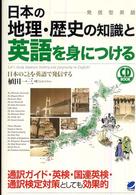Full Description
Bilingual language exposure is highly variable, with wide-ranging influences on early language skills. This underscores the need for understanding what to expect in early language acquisition so that those with typical language development can be differentiated from those who are struggling or at risk, and so requiring early intervention. One of the key ways to look at language development in very young children is to investigate their vocabulary development, and for bilingual children, this means measuring their abilities in both languages.
This book takes an important step in this direction: it documents the expressive vocabularies of children aged 16-45 months who were exposed to different language pairs and bilingual contexts, and investigates the risk and protective effects of various environmental factors. In each of the six studies, the vocabularies of typically-developing children were measured using the vocabulary checklist of the MacArthur-Bates Communicative Development Inventories and its adaptations to other languages. Developmental and language background questionnaires provided additional information on children's developmental history, risk factors for language impairment, language exposure, as well as parental education and occupation. This harmonised methodology was designed within COST Action IS0804 (Language Impairment in a Multilingual Society: Linguistic Patterns and the Road to Assessment). The outcomes of this cross-linguistic research contribute towards answering theoretical questions regarding early bilingual vocabulary acquisition. They also have clinical relevance, potentially assisting speech-language pathologists and those interested in early language development in distinguishing between clinically significant bilingual delays and the natural consequences of bilingual exposure. This book was originally published as a special issue of the International Journal of Bilingual Education and Bilingualism.
Contents
Introduction: Risk and protective environmental factors for early bilingual language acquisition 1. Parent report of early lexical production in bilingual children: a cross-linguistic CDI comparison 2. Bilingual language acquisition in a minority context: using the Irish-English Communicative Development Inventory to track acquisition of an endangered language 3. Bilingual vocabulary production in young children receiving Maltese-dominant exposure: individual differences and the influence of demographic and language exposure factors 4. The impact of a fi rst-generation immigrant environment on the heritage language: productive vocabularies of Polish toddlers living in the UK and Ireland 5. A CDI study of bilingual English-Hebrew children - frequency of exposure as a major source of variation 6. The relationship between fi rst language (L1) and second language (L2) lexical development in young Turkish-German children








